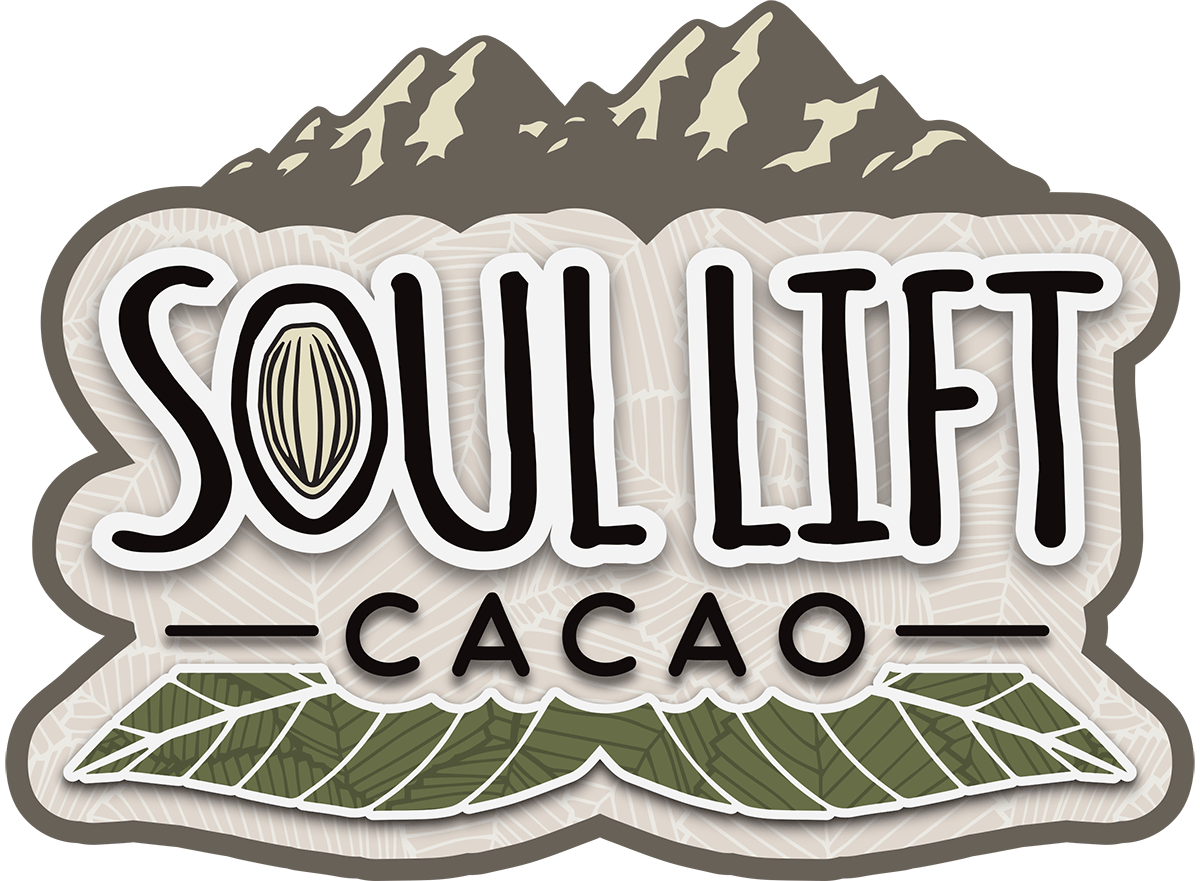Have you been scanning and trying ceremonial cacao products but feel confused about the options out there? You're not alone!
The internet makes it possible for anyone to put up a website and sell cacao. But that means it can be really hard to know what's important to look out for, or to even establish a common definition of what "ceremonial cacao" means.
Ora Cacao often comes up high in internet searches for ceremonial cacao. They even use the URL ceremonial-cacao.com, making it seem very official.
Really there's no official ceremonial cacao, but there are certain baseline criteria to be aware of – especially if you'll be using cacao in spiritual practice alone or with others and want something authentic and ethical.
The chart below lays out the differences between what we offer at Soul Lift Cacao and what's offered at Ora Cacao.
COMPARISON OF FEATURES
*Using mobile? Turn device sideways to see the whole chart*
|
Soul Lift Cacao |
Ora Cacao |
| Farm Locations |
All in parts of Latin America with a pre-Hispanic history of ceremonial cacao use. Label goes beyond the country to smaller regions. |
Single origin by country. Some are pre-Hispanic cacao locations. One Tanzanian origin claimed to be "ceremonial" for unclear reasons. "Oaxacan Spice" product is made with Guatemalan cacao, not from Mexico (where Oaxaca is located). |
| Special Farm Characteristics |
Three origins (El Cielo, La Noche, and Tuk Tuk) grown and harvested according to the Mayan Cosmovision. Siguacan grown in regenerative polyculture (multiple crops on one parcel of land). |
Unspecified |
| Organic Status |
Cacao grown without chemical pesticides or fertilizers. Family farms produce in small batches. Organic certification would be cost-prohibitive for them. |
Organic certified from larger producers |
| Farmer Compensation |
Average $2.70 USD per lb of dried seeds. (2022 amounts; 2024 numbers coming soon) |
Stated minimum double "fair trade," but without specifying exact amounts. |
| Fermentation Length |
Listed on each pure cacao product page. |
Unspecified |
| Location of Processing Seeds into Paste |
In the same country where the cacao grows. |
Northern California |
| Roasting/Toasting Method |
Listed on the product page and packaging. Primary focus on cacao toasted over wood fire by indigenous women. |
Oven roasted in a modern American factory. |
| Peeled or Winnowed? |
Listed on the product page and packaging. Primary focus on cacao that's hand-peeled by indigenous women. |
Winnowed (seeds cracked and husks removed mechanically) |
| Grinding Method |
El Cielo and La Noche cacaos are ground on a traditional stone metate. Others are ground in a simple mechanical mill. |
Mechanical mill |
| Conched/Tempered? |
Cacao is not conched (refined) or tempered (heated and cooled for uniform appearance), but simply poured into a traditional block to show the natural cacao butter patterns. |
All cacao is conched, tempered, and made into small discs in a modern factory. |
| Heavy Metal Testing |
All varieties tested. PPM and CA Prop 65 results listed on our blog. |
Claim to test but don't list PPM or CA Prop 65 status. |
| Caffeine and Theobromine Testing |
All varieties tested. Caffeine and theobromine amounts per serving are listed on every product page and front label. Comparison chart is on our blog. |
Website says 35mg of caffeine per cup of cacao without specifying which origin that is. All 100% pure packages say 36mg caffeine, 212mg theobromine, even though no two sources in the world are likely to have the exact same numbers of both. |
| Mold Testing |
All varieties tested with breakdown on our blog. |
Unspecified |
| Polyphenol Antioxidant Testing |
Heart of the Earth cacao test showed more than 2x the amount in average dark chocolate. |
Unspecified |
FINANCIAL BREAKDOWN
While it might not seem "spiritual," the financial picture is one of the most important things to consider when comparing sources of cacao.
The charts below compare the financial breakdown of a pound of pure cacao sold by Soul Lift Cacao vs Ora Cacao.
Ora's values are based on their claim of paying two times the Fair Trade rate, which as of Sept 2023 is about $1.36 per lb (so they presumably pay $2.72 per lb). As of May 2024, their retail rate for a pound of pure cacao is $49 USD. So per lb, $46.28 are going to the company and other logistical costs like shipping.
As of May 2024, Soul Lift's average retail price for a 1lb block is $57.63. But the average that goes to the native cacao artisans in the country where the cacao grows is $15.56 USD, on top of the $2.70 average going to farmers. So about $18.26 average stays in the source country – 6.71x (or 671%) more than in the Ora model.
ETHICS
The modern world is still in the process of establishing a clear context to be able to understand what "ceremonial cacao" even means.
The time is gone when things can be taken at face value. Claims really need to be examined more closely to make sure there's a net benefit in the movement.
Ceremonial cacao isn't just pure cacao marketed for spiritual use. It needs to involve the historical cacao stewards not only in the farming but also in the preparation.
Doing it in the same country where the cacao grows is a clear way to give back to countries that have been destabilized and exploited by foreign governments and corporations. That plus transparency about the who and where can avoid cultural appropriation.
Now you can see how much information really needs to be considered.
If you have any further questions, check our FAQ page and other blog articles. Or visit our online shop!




